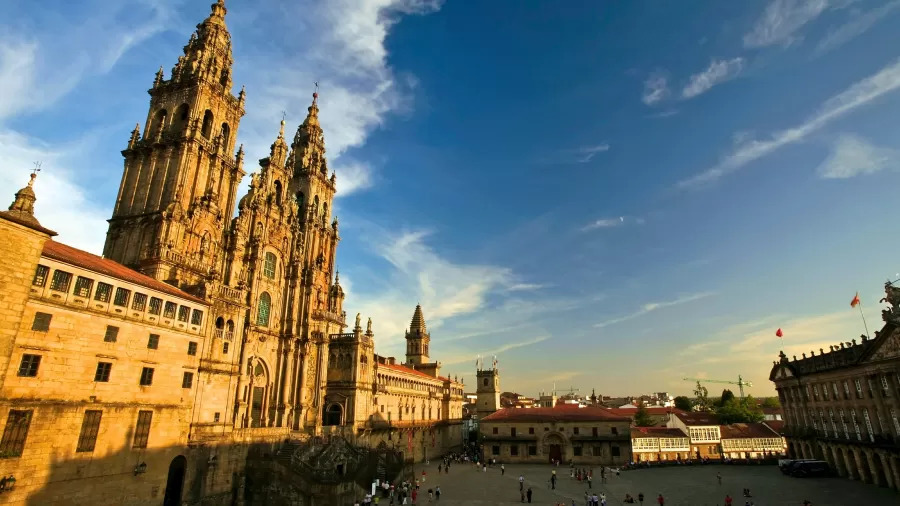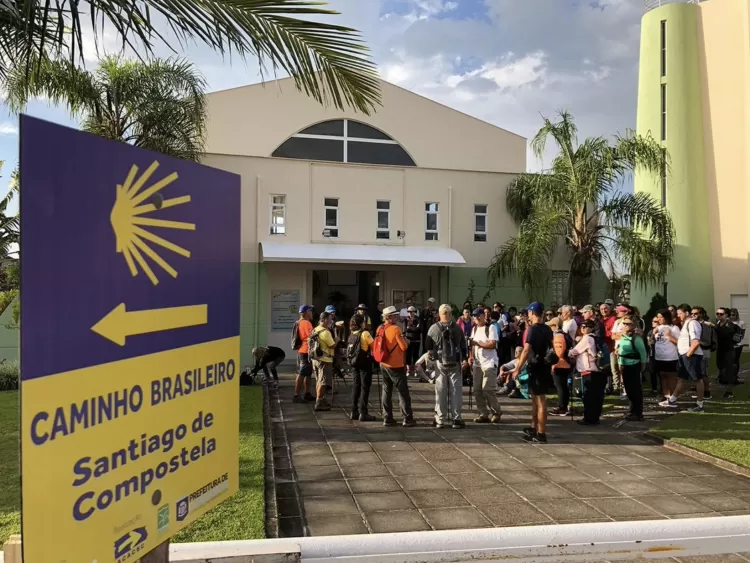The municipal government of Florianópolis published in the Official Gazette a couple of days ago the law signed by mayor Topázio Neto which recognizes and makes official the Brazilian Way of Saint James of Compostela.
This stretch passes through the capital of the Brazilian Santa Catarina state.
The route starts in Canasvieiras, in the North of the island, and should be connected in the district of Ingleses do Rio Vermelho to the historical route in Galicia, starting in La Coruña, recognized by the Spanish government as the starting point of the “English Way” routes – which date back to the 12th century.
According to law number 10,923, the journey is 21 kilometers long.

With its sanction, the city hall says it will be able to “establish partnerships to draw up regulations and studies necessary for the geographical demarcation, signaling, implementation and maintenance” of the sites, in addition to providing teaching materials for the environmental education of pilgrims.
Here are the points to be followed by travelers, in order, according to the new law:
- Nossa Senhora de Guadalupe Church, in Canasvieiras;
- Rua Afonso Cardoso da Veiga, Canasvieiras;
- Connection between Canasvieiras and Cachoeira do Bom Jesus through the beach;
- Alcina Jannis Street, Ponta das Canas;
- Luiz Boiteux Piazza Avenue, Ponta das Canas;
- Deputado Fernando Viegas Street, Ponta das Canas;
- São Pedro Church, Ponta das Canas;
- Road Journalist Jaime de Arruda Ramos, Ponta das Canas;
- Lagoinha Beach, Ponta das Canas;
- Estrada Jornalista Jaime de Arruda Ramos, Ponta das Canas;
- Path with two options: a) Estrada Jornalista Jaime de Arruda Ramos, Ponta das Canas;
- Servidão Portal das Flores, Ponta das Canas; Avenida do Sol, in Brava Beach or b)
- Estrada Jornalista Jaime de Arruda Ramos, Ponta das Canas; Morro do Rapa trail,
- Avenida do Sol, in Brava Beach; Rua Sinésio Duarte, Brava Beach;
- Morro da Feiticeira trail, which leads from Brava Beach to Ingleses Beach;
- Path with two options: a) Path along the beach, Councilor Onildo Lemos Road, Ingleses;
- Nossa Senhora dos Navegantes Church, Ingleses or b) Gaivotas Street, Avenida Dom
- João Becker, Nossa Senhora dos Navegantes Church, Ingleses;
- Avenida Dom João Becker, Ingleses;
- Rua Mercúrio (Mercury Street), Ingleses;
- Intendente João Nunes Vieira Street, Ingleses;
- End of the Path in the Shrine Sagrado Coração de Jesus, Ingleses.
According to the Sacred Heart of Jesus Sanctuary, the endpoint of the pilgrimage on national territory, the Brazilian Way had already been recognized by the Spanish in 2017.
It was traced by the Santa Catarina Association of Friends of the Way of Santiago de Compostela (ACACSC) following requirements determined by the Basilica of Santiago.
To be considered part of the official pilgrimage to Compostela, the route in Brazil should be through nature, have more than 20 km, start and end in a church, and pass by two other temples along the Way – requirements met by the pilgrimage from Santa Catarina.
WHY IS THE WALK TO SANTIAGO DE COMPOSTELA SO FAMOUS?
The oldest account of the pilgrimages to the Spanish city is in the 10th-century document Concordia of Antealtares, which tells the story of the voyage of the hermit Pelagius, who saw night lights in a forest and, following them, discovered a stone tomb where the body of St. James the Greater (or St. James Zebedee), Christ’s apostle, would be buried.
The tomb’s discovery is said to have happened as early as the 9th century.
Since then, walkers moved by faith began to retrace their steps, not only to visit the tomb but to live the spiritual experience of the journey to Santiago de Compostela – as the city that houses the Basilica and the resting place of St. James is known today.
There are nine officially recognized “main” roads to Compostela.
Still, several have alternative stretches, bifurcations, and – as in the case of the Brazilian Way – external routes that connect to the traditional European ones.

The French Way, the Portuguese Inland Way, and the English Way are the best-known.
To be an “official” pilgrim and receive the Certificate of Distance, which attests to the walk completion, it is necessary to cover at least 100 kilometers on foot or horseback.
If on a bicycle, the pilgrim must travel at least 200 kilometers.
In 2021, almost 179,000 pilgrims made one of the Caminos de Santiago – in 2019, before the pandemic, this number had been even higher: 347,500.

